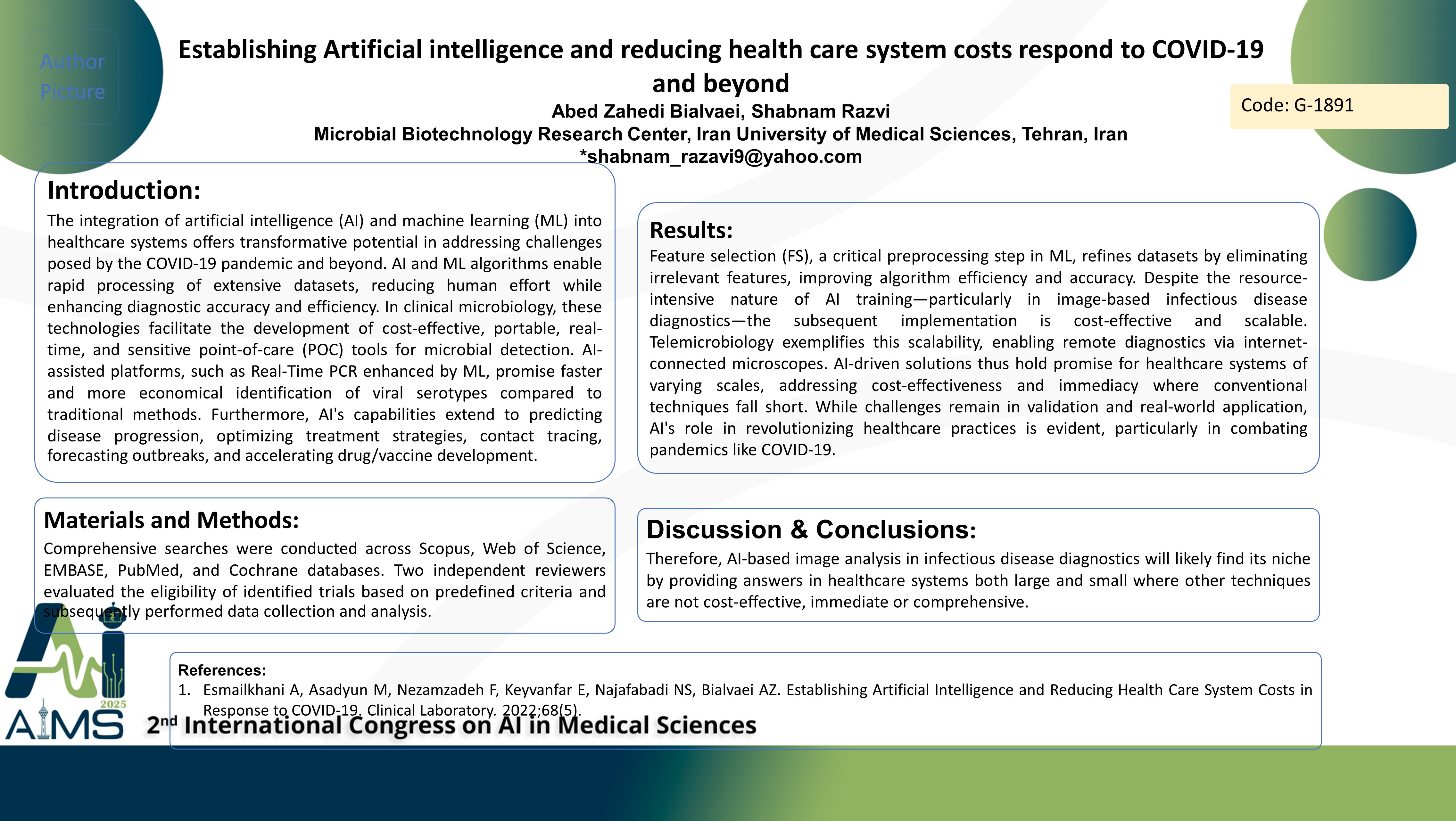ایجاد هوش مصنوعی و کاهش هزینههای سیستم مراقبتهای بهداشتی در پاسخ به COVID-19 و فراتر از آن
کد: G-1891
نویسندگان: Abed Zahedi Bialvaei ℗, Shabnam Razavi *
زمان بندی: زمان بندی نشده!
برچسب: دستیار مجازی هوشمند
دانلود: دانلود پوستر
خلاصه مقاله:
خلاصه مقاله
Background and aims: The integration of artificial intelligence (AI) and machine learning (ML) into healthcare systems offers transformative potential in addressing challenges posed by the COVID-19 pandemic and beyond. AI and ML algorithms enable rapid processing of extensive datasets, reducing human effort while enhancing diagnostic accuracy and efficiency. In clinical microbiology, these technologies facilitate the development of cost-effective, portable, real-time, and sensitive point-of-care (POC) tools for microbial detection. AI-assisted platforms, such as Real-Time PCR enhanced by ML, promise faster and more economical identification of viral serotypes compared to traditional methods. Furthermore, AI's capabilities extend to predicting disease progression, optimizing treatment strategies, contact tracing, forecasting outbreaks, and accelerating drug/vaccine development. Method: Comprehensive searches were conducted across Scopus, Web of Science, EMBASE, PubMed, and Cochrane databases. Two independent reviewers evaluated the eligibility of identified trials based on predefined criteria and subsequently performed data collection and analysis. Results: Feature selection (FS), a critical preprocessing step in ML, refines datasets by eliminating irrelevant features, improving algorithm efficiency and accuracy. Despite the resource-intensive nature of AI training—particularly in image-based infectious disease diagnostics—the subsequent implementation is cost-effective and scalable. Telemicrobiology exemplifies this scalability, enabling remote diagnostics via internet-connected microscopes. AI-driven solutions thus hold promise for healthcare systems of varying scales, addressing cost-effectiveness and immediacy where conventional techniques fall short. While challenges remain in validation and real-world application, AI's role in revolutionizing healthcare practices is evident, particularly in combating pandemics like COVID-19. Conclusion: Therefore, AI-based image analysis in infectious disease diagnostics will likely find its niche by providing answers in healthcare systems both large and small where other techniques are not cost-effective, immediate or comprehensive.
کلمات کلیدی
Artificial Intelligence, COVID-19, Telemicrobiology, Machine Learning
